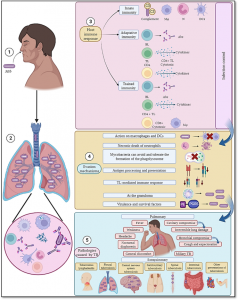Subclinical Tuberculosis : Concern

Subclinical Tuberculosis (TB) is a growing concern in India, contributing to the slow decline in TB incidence rates despite advances in detection and treatment.
- Subclinical TB refers to a form of TB infection where individuals do not exhibit the typical symptoms of the disease, such as a persistent cough.
- This makes it harder to detect compared to active TB, which presents with more apparent symptoms.
- It is often identified through imaging techniques like chest X-rays or molecular tests, as it may not be noticeable through routine symptom-based screenings.
- Subclinical TB accounted for 42.6% of cases in the National TB Prevalence Survey (2019-2021), with similar findings in Tamil Nadu (39%).
- Although asymptomatic, individuals with subclinical TB can still spread the bacteria to others.
- High-burden countries, including India, have a considerable proportion of subclinical TB, which remains largely undetected, thus sustaining the transmission of the disease.
- Countries like Vietnam have successfully reduced TB prevalence by screening entire populations using X-rays and molecular tests, regardless of symptoms.
- Implementing similar large-scale screening in India would require strategic shifts, including mobile units and community engagement.
- This form of TB can contribute to the slow decline in overall TB incidence rates, as it remains largely undetected and untreated.




